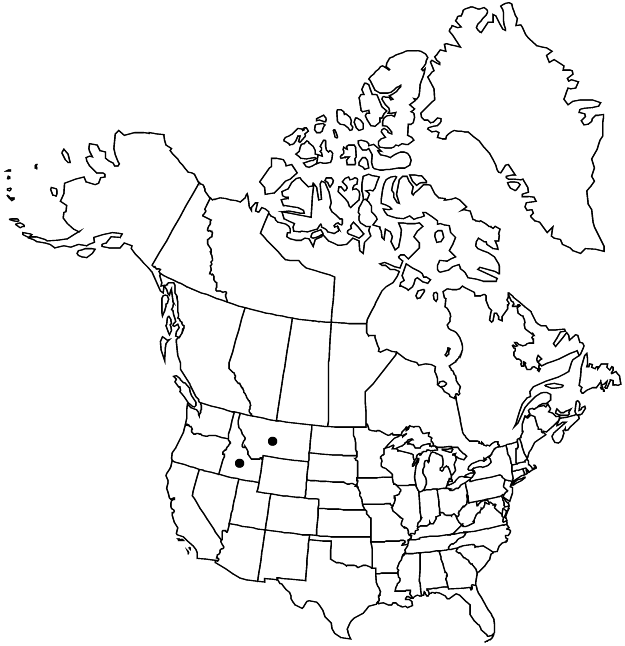Difference between revisions of "Sedum borschii"
Sedum N. Amer., 298. 1975,.
FNA>Volume Importer |
FNA>Volume Importer |
Revision as of 23:02, 16 December 2019
Herbs, perennial, tufted, glabrous. Stems decumbent, lateral branches from proximal axils, rosettes formed in proximal axils (giving rise to flowering shoots). Leaves alternate, (loosely imbricate), divergent, sessile; blade green, not glaucous, obovate or elliptic, rarely lanceolate, subterete, 4.7–7.5 × 2.5–3.4 mm, base not spurred, not scarious, apex obtuse, (surfaces finely papillose marginally). Flowering shoots ascending, appearing angled when dry, simple or branched, 4.7–6 cm; leaf blades elliptic-oblong or oblanceolate, base not spurred; offsets axillary rosettes only basally. Inflorescences cymes, 3–15-flowered, 2–3-branched; branches not or only slightly recurved, not forked; bracts (2–3), similar to leaves, smaller. Pedicels absent or to 0.1 mm. Flowers 5-merous; sepals erect, basally connate, yellow-green, ovate, equal, ca. 2 × 15 mm, apex acute or obtuse; petals widely spreading, distinct, yellowish green, lanceolate-elliptic, not carinate, 5–6.5 mm, apex acute with minute mucronate appendage; filaments yellow; anthers yellow; nectar scales yellow to orange, rarely pale yellow to greenish white, square or ± square. Carpels widely divergent in fruit, connate basally, brown. 2n = 32, 43–51, 45–54, 50.
Phenology: Flowering spring–summer.
Habitat: Cliffs and rocky slopes on a variety of rocks, sites which are too hot and dry for trees
Elevation: 1200-2200 m
Discussion
The mature carpels of Sedum borschii have prominent lips along the adaxial suture.
Selected References
None.
